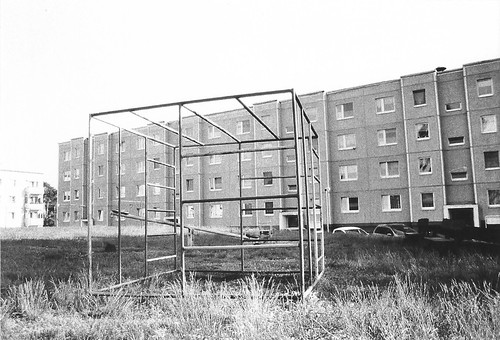Unmodified and modified peptide were 1028 and 1029, respectively. (DOCX) Figure S3 Mass Spectrometry Data from the Oxidatively Modified Peptide 130E+16 WE133L+16 S135F+16 136R of the D1 Protein A. Top, spectrum of the CID dissociation of the modified peptide. Various identified ions are labeled. Bottom, table of all predicted masses for the y- and b- ions generated from this peptide sequence. Ions identified in the CID spectrum (above) are shown in red. The b’++, b’+ y’++ and y’+ ions are generated by the neutral loss of water while the b*++, b*+ y*++ and y*+ ions are generated from the loss of 11138725 ammonia. The p value for this peptide is 1026. (DOCX)Author ContributionsConceived and designed the experiments: LKF TMB. Performed the experiments: LKF LS. Analyzed the data: LKF TMB. Contributed reagents/materials/analysis tools: LKF TMB PAL. Wrote the paper: LKF TMB.
Mycoplasmas are the smallest and simplest self-replicating prokaryotes. They evolved from Gram-positive bacteria following a regressive process that led to the reduction of genomic resources to an essential minimum [1]. As a consequence of their extremely limited biosynthetic capabilities, mycoplasmas adapted to a parasitic lifestyle, relying on the host for many  metabolic precursors [1]. In particular, mycoplasmas lost the ability to synthesize de novo purine and pyrimidine bases, and dramatically depend on the salvage pathway [2,3,4] for producing nucleotide precursors. Through the salvage pathway, free bases and nucleosides released from the breakdown of nucleic acids are converted back into nucleotides, which can therefore be recycled for bacterial nucleic acids production and for DNA repair. A possible exception to this is Mycoplasma penetrans (M. penetrans), which lacks the uridine kinase gene but has a uracil phosphoribosyl transferase and an orotaterelated pathway for UMP production in pyrimidine metabolism [5]. Indeed, mycoplasmas evolutionary constraints in host adaptation forced to maintain membrane key components for extracellular degradation of nucleic acids, such as nucleases, and for transporting selected nucleotides precursors through themembrane, such as ATP-binding cassette (ABC) transport systems [1]. The importance of nucleases in mycoplasmas life cycle is reinforced by their detection in at least 20 Mycoplasma species [6,7,8,9,10,11,12,13]. Several studies indicate that many of these enzymes are implicated in host pathogenicity and cytotoxicity. As an example, the Staphylococcal Nuclease (SNase) homologue of M. hyorhinis is able to induce chromatin internucleosomal degradation and apoptotic changes in epithelial cells [11]. 24786787 Similarly, it was demonstrated that the endonuclease P40 of M. penetrans triggers inhibitor apoptosis in lymphocytes in vitro [14]. In a previous study, we systematically characterized the liposoluble proteome of M. agalactiae PG2T [15]. Among the identified proteins, we demonstrated the expression of MAG_5040, which was classified, according to gene ontology analyses, as a surface lipoprotein containing the conserved SNase domain of Staphylococcus aureus (S. aureus). Proteins homologues to SNase have been identified in many bacteria, and in several mycoplasmas [6,16,17,18,19]. In this study we characterized the in vitro activity of the putative M. agalactiae SNase MAG_5040, and we investigated its expression and antigenic properties during natural infection. The gene Epigenetic Reader Domain encoding MAG_5040 was cloned and GST-tagged in an E. coli expression system. Substr.Unmodified and modified peptide were 1028 and 1029, respectively. (DOCX) Figure S3 Mass Spectrometry Data from the Oxidatively Modified Peptide 130E+16
metabolic precursors [1]. In particular, mycoplasmas lost the ability to synthesize de novo purine and pyrimidine bases, and dramatically depend on the salvage pathway [2,3,4] for producing nucleotide precursors. Through the salvage pathway, free bases and nucleosides released from the breakdown of nucleic acids are converted back into nucleotides, which can therefore be recycled for bacterial nucleic acids production and for DNA repair. A possible exception to this is Mycoplasma penetrans (M. penetrans), which lacks the uridine kinase gene but has a uracil phosphoribosyl transferase and an orotaterelated pathway for UMP production in pyrimidine metabolism [5]. Indeed, mycoplasmas evolutionary constraints in host adaptation forced to maintain membrane key components for extracellular degradation of nucleic acids, such as nucleases, and for transporting selected nucleotides precursors through themembrane, such as ATP-binding cassette (ABC) transport systems [1]. The importance of nucleases in mycoplasmas life cycle is reinforced by their detection in at least 20 Mycoplasma species [6,7,8,9,10,11,12,13]. Several studies indicate that many of these enzymes are implicated in host pathogenicity and cytotoxicity. As an example, the Staphylococcal Nuclease (SNase) homologue of M. hyorhinis is able to induce chromatin internucleosomal degradation and apoptotic changes in epithelial cells [11]. 24786787 Similarly, it was demonstrated that the endonuclease P40 of M. penetrans triggers inhibitor apoptosis in lymphocytes in vitro [14]. In a previous study, we systematically characterized the liposoluble proteome of M. agalactiae PG2T [15]. Among the identified proteins, we demonstrated the expression of MAG_5040, which was classified, according to gene ontology analyses, as a surface lipoprotein containing the conserved SNase domain of Staphylococcus aureus (S. aureus). Proteins homologues to SNase have been identified in many bacteria, and in several mycoplasmas [6,16,17,18,19]. In this study we characterized the in vitro activity of the putative M. agalactiae SNase MAG_5040, and we investigated its expression and antigenic properties during natural infection. The gene Epigenetic Reader Domain encoding MAG_5040 was cloned and GST-tagged in an E. coli expression system. Substr.Unmodified and modified peptide were 1028 and 1029, respectively. (DOCX) Figure S3 Mass Spectrometry Data from the Oxidatively Modified Peptide 130E+16  WE133L+16 S135F+16 136R of the D1 Protein A. Top, spectrum of the CID dissociation of the modified peptide. Various identified ions are labeled. Bottom, table of all predicted masses for the y- and b- ions generated from this peptide sequence. Ions identified in the CID spectrum (above) are shown in red. The b’++, b’+ y’++ and y’+ ions are generated by the neutral loss of water while the b*++, b*+ y*++ and y*+ ions are generated from the loss of 11138725 ammonia. The p value for this peptide is 1026. (DOCX)Author ContributionsConceived and designed the experiments: LKF TMB. Performed the experiments: LKF LS. Analyzed the data: LKF TMB. Contributed reagents/materials/analysis tools: LKF TMB PAL. Wrote the paper: LKF TMB.
WE133L+16 S135F+16 136R of the D1 Protein A. Top, spectrum of the CID dissociation of the modified peptide. Various identified ions are labeled. Bottom, table of all predicted masses for the y- and b- ions generated from this peptide sequence. Ions identified in the CID spectrum (above) are shown in red. The b’++, b’+ y’++ and y’+ ions are generated by the neutral loss of water while the b*++, b*+ y*++ and y*+ ions are generated from the loss of 11138725 ammonia. The p value for this peptide is 1026. (DOCX)Author ContributionsConceived and designed the experiments: LKF TMB. Performed the experiments: LKF LS. Analyzed the data: LKF TMB. Contributed reagents/materials/analysis tools: LKF TMB PAL. Wrote the paper: LKF TMB.
Mycoplasmas are the smallest and simplest self-replicating prokaryotes. They evolved from Gram-positive bacteria following a regressive process that led to the reduction of genomic resources to an essential minimum [1]. As a consequence of their extremely limited biosynthetic capabilities, mycoplasmas adapted to a parasitic lifestyle, relying on the host for many metabolic precursors [1]. In particular, mycoplasmas lost the ability to synthesize de novo purine and pyrimidine bases, and dramatically depend on the salvage pathway [2,3,4] for producing nucleotide precursors. Through the salvage pathway, free bases and nucleosides released from the breakdown of nucleic acids are converted back into nucleotides, which can therefore be recycled for bacterial nucleic acids production and for DNA repair. A possible exception to this is Mycoplasma penetrans (M. penetrans), which lacks the uridine kinase gene but has a uracil phosphoribosyl transferase and an orotaterelated pathway for UMP production in pyrimidine metabolism [5]. Indeed, mycoplasmas evolutionary constraints in host adaptation forced to maintain membrane key components for extracellular degradation of nucleic acids, such as nucleases, and for transporting selected nucleotides precursors through themembrane, such as ATP-binding cassette (ABC) transport systems [1]. The importance of nucleases in mycoplasmas life cycle is reinforced by their detection in at least 20 Mycoplasma species [6,7,8,9,10,11,12,13]. Several studies indicate that many of these enzymes are implicated in host pathogenicity and cytotoxicity. As an example, the Staphylococcal Nuclease (SNase) homologue of M. hyorhinis is able to induce chromatin internucleosomal degradation and apoptotic changes in epithelial cells [11]. 24786787 Similarly, it was demonstrated that the endonuclease P40 of M. penetrans triggers apoptosis in lymphocytes in vitro [14]. In a previous study, we systematically characterized the liposoluble proteome of M. agalactiae PG2T [15]. Among the identified proteins, we demonstrated the expression of MAG_5040, which was classified, according to gene ontology analyses, as a surface lipoprotein containing the conserved SNase domain of Staphylococcus aureus (S. aureus). Proteins homologues to SNase have been identified in many bacteria, and in several mycoplasmas [6,16,17,18,19]. In this study we characterized the in vitro activity of the putative M. agalactiae SNase MAG_5040, and we investigated its expression and antigenic properties during natural infection. The gene encoding MAG_5040 was cloned and GST-tagged in an E. coli expression system. Substr.
